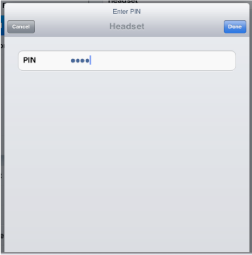1. Understanding Bluetooth
Bluetooth allows your iPad to communicate with things
wirelessly. Bluetooth is a small radio that transmits from each device.
Before you can use a peripheral with the iPad, you have to "pair" it
with that device to connect it to the peripheral. Many Bluetooth devices
can be used up to 30 feet away from the iPad.
1.1. Bluetooth Devices that Work with the iPad
Among other things, the iPad
works with Bluetooth headphones, Bluetooth stereo systems and adapters,
Bluetooth car stereo systems, and Bluetooth wireless keyboards. The iPad
supports A2DP, which is known as Stereo Bluetooth.
2. Pairing with a Bluetooth Device
Your primary uses for Bluetooth might be with
Bluetooth headphones, Bluetooth stereo adapters, or a Bluetooth
keyboard. Any Bluetooth headphones should work well with your iPad. To
start using any Bluetooth device, you need to first pair (connect) it
with your iPad.
2.1. Turn On Bluetooth
The first step to using Bluetooth is to turn the Bluetooth radio On.
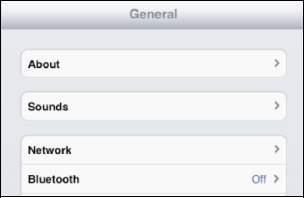
Tap your Settings icon.
 Then, touch the General tab in the left column.
Then, touch the General tab in the left column.

You will see the Bluetooth tab in the right-hand column.
By default, Bluetooth is initially Off on the iPad. Tap the switch to move it to the On position.
|
Bluetooth is an added drain on your battery. If you
don't plan on using Bluetooth for a period of time, think about turning
the switch back to OFF.
|
|
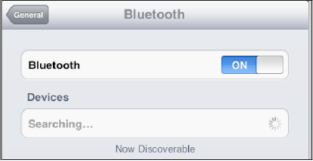
2.2. Pairing with Headphones or any Bluetooth Device
As soon as you turn Bluetooth On, the iPad will begin to search for any nearby Bluetooth device—like a Bluetooth headset or keyboard (see Figure 10-1).
For the iPad to find your Bluetooth device, you need to put that device
into "pairing mode." Read the instructions carefully that came with
your headset—usually there is a combination of buttons to push to
achieve this.
|
Some headsets require you to press and hold a button
for five seconds until you see a series of flashing blue or red/blue
lights. Some accessories, such as the Apple wireless Bluetooth keyboard,
automatically start up in pairing mode.
|
|
Once the iPad detects the Bluetooth device, it will
attempt to automatically pair with it. If pairing takes place
automatically, there is nothing more for you to do.
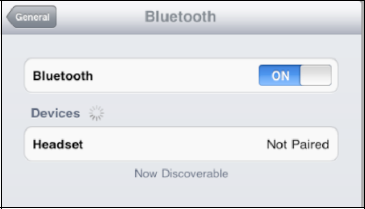
If the image in Figure 10-2 stays unchanged, then tap the device (e.g., Apple wireless keyboard) to bring up a pop-up window that asks for a pairing ID.
NOTE
In the case of a Bluetooth device, such as a
keyboard, you maybe asked to enter a randomly-generated series of
numbers (passkey) on the keyboard itself. See Figure 2.
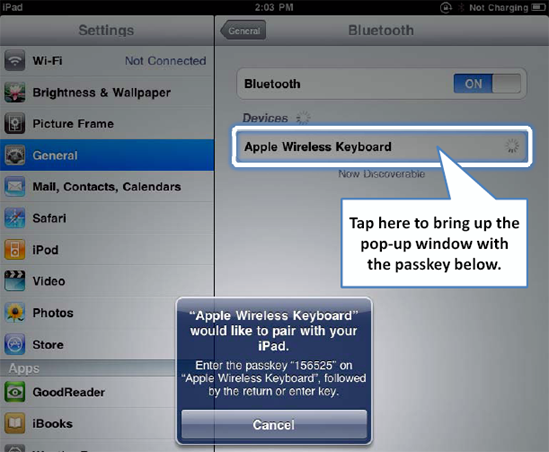
If the iPad asks for a PIN or pass code to be
entered, the keyboard will be displayed, and you will enter the
four-digit pass code supplied by the headset manufacturer. Most devices
use 0000 or 1234, which is why the iPad can try to automatically pair
with most devices. Check your headset documentation to learn the correct
pass code or PIN for your device.
